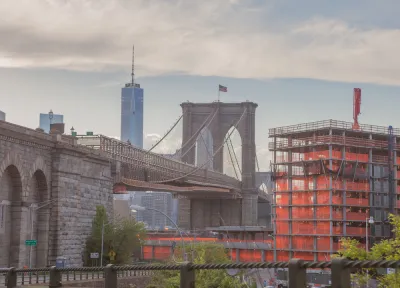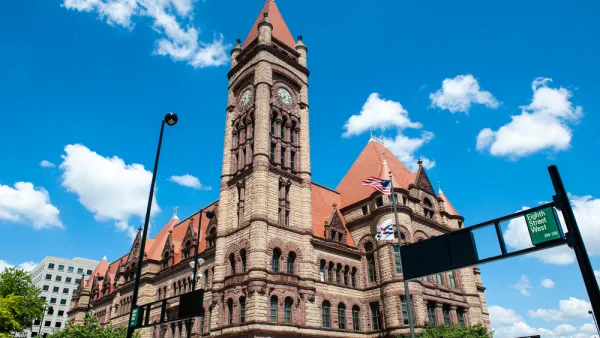The high costs of housing development do not fit a convenient narrative, according to new analysis by Jenny Schuetz from the Brookings Institution.

Jenny Schuetz lays out both sides of one of the core debates in planning in 2020:
Public debate falls into two schools of thought as to why housing costs are so high in many parts of the U.S. The YIMBY (“Yes In My Backyard”) school argues that housing is expensive because local governments—and voters—have adopted overly restrictive land use regulations that limit the construction of new housing. On the other hand, left-leaning politicians like Bernie Sanders contend that housing is expensive because “corrupt real estate developers are gentrifying neighborhoods.”
To find some clarity amid these conflicting versions of a story that matters to every American, Schuetz identifies facts about "the financial ecosystem of housing development, and discuss the ways land use regulations affect development decisions."
As an immediate example of the complications that arise when moving beyond simplistic explanations, Schuetz's list of participants in the ecosystem of the housing industry goes beyond developers and homeowners to include landowners, brokers, construction lenders, and home builders.
A clear and easy-to-understand explanation of these roles in the process of residential development follows—so the article could be construed as an explainer, demystifying a complex topic, rather than just drawing attention to the complexities of the process.
Other concepts explored in the article include a discussion of the time value of money, regulatory barriers, and risk—so the article sill explicitly and implicitly builds a case for regulatory reform.
FULL STORY: Who’s to blame for high housing costs? It’s more complicated than you think.

National Parks Layoffs Will Cause Communities to Lose Billions
Thousands of essential park workers were laid off this week, just before the busy spring break season.

Retro-silient?: America’s First “Eco-burb,” The Woodlands Turns 50
A master-planned community north of Houston offers lessons on green infrastructure and resilient design, but falls short of its founder’s lofty affordability and walkability goals.

Delivering for America Plan Will Downgrade Mail Service in at Least 49.5 Percent of Zip Codes
Republican and Democrat lawmakers criticize the plan for its disproportionate negative impact on rural communities.

Test News Post 1
This is a summary

Test News Headline 46
Test for the image on the front page.

Balancing Bombs and Butterflies: How the National Guard Protects a Rare Species
The National Guard at Fort Indiantown Gap uses GIS technology and land management strategies to balance military training with conservation efforts, ensuring the survival of the rare eastern regal fritillary butterfly.
Urban Design for Planners 1: Software Tools
This six-course series explores essential urban design concepts using open source software and equips planners with the tools they need to participate fully in the urban design process.
Planning for Universal Design
Learn the tools for implementing Universal Design in planning regulations.
EMC Planning Group, Inc.
Planetizen
Planetizen
Mpact (formerly Rail~Volution)
Great Falls Development Authority, Inc.
HUDs Office of Policy Development and Research
NYU Wagner Graduate School of Public Service





























